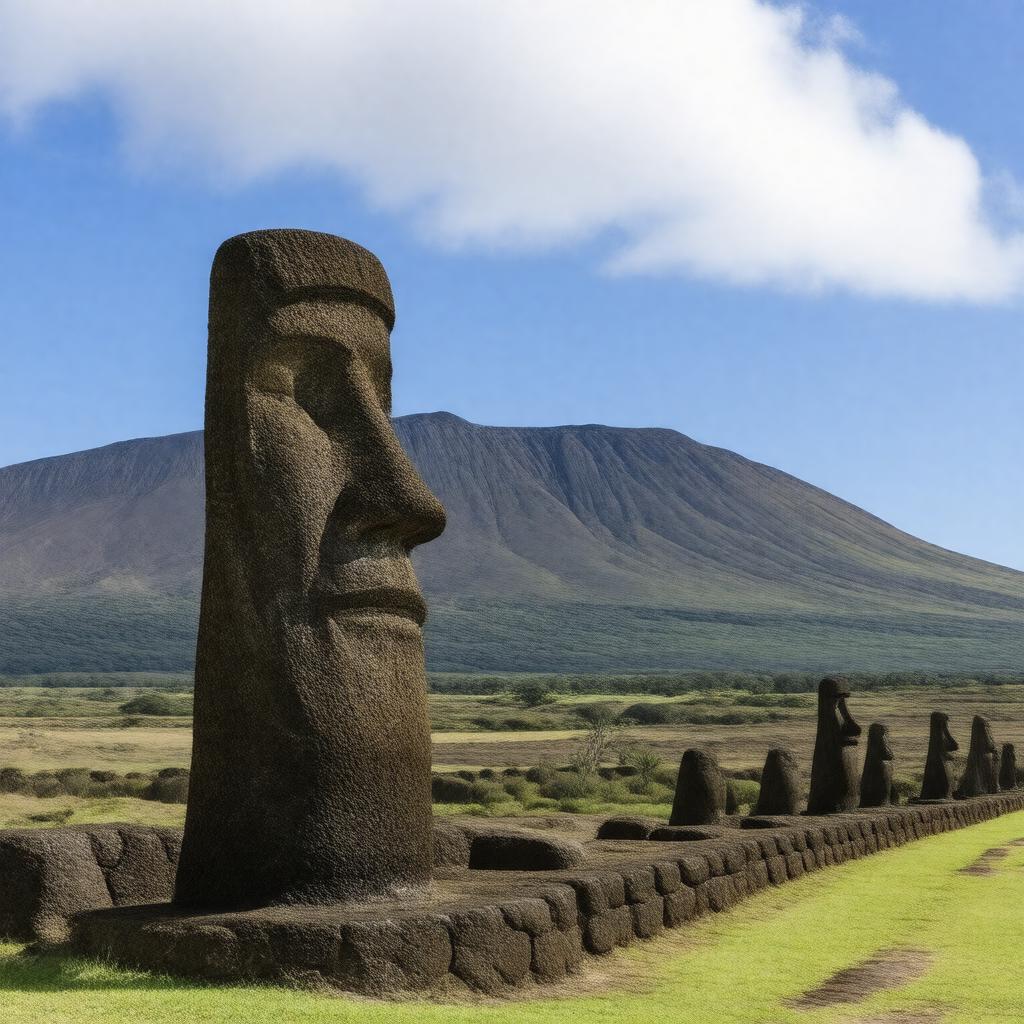Prompt
"Generate an image of a scenic landscape of Rapa Nui, also known as Easter Island, featuring iconic moai statues standing on the coastline, with a volcanic crater in the background, under a clear blue sky with a few clouds, in a realistic and detailed style."

